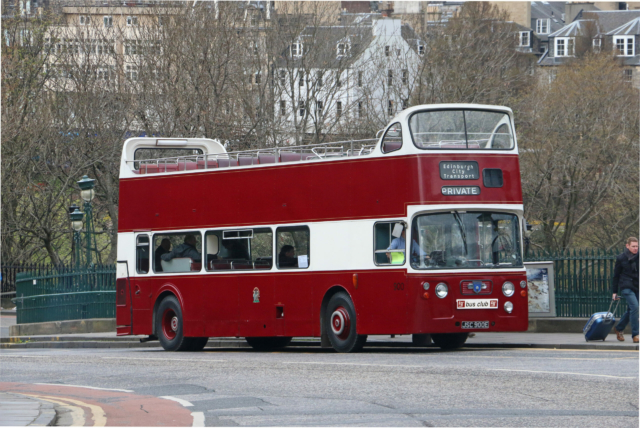Edinburgh’s first rear-engined Atlantean arrived in 1965, built to the then standard dimensions of 30 ft in length and 8ft in width. The maximum permitted dimensions changed in 1966 so Edinburgh chose to conclude its 1967 order with an experimental bus built to the new dimensions (33ft long, 8ft 2.5 inches wide). 900 materialised as the very first Atlantean Leyland built to these dimensions and it carried the first of Alexander’s wider J type body. As new it was fitted with two experimental features, namely a top deck passenger counter operated by treadles under two of the steps which fed an illuminated sign showing how many vacant seats were left on the upper deck when this number was less than 10, and sensitive edges to the passenger doors which caused them to rebound in the event that anything became caught between the two leaves. Not entirely surprisingly, these features proved unreliable in operation so they were removed in due course. 900 was the first bus in the fleet to be fitted with an air-operated spring handbrake which was at first mounted to the left of the steering column, where the gear change was usually located. For some years, a trade union agreement prevented standing passengers from being carried on 900, somewhat negating its potential passenger capacity. It operated for its first three years on service 2/12, transferring when converted to one-person operation to service 49. When withdrawn from normal service at Marine garage, where it had always been based, 900 was converted to open-top format for use on special tourist orientated operations, becoming the forerunner of the highly successful open top tours business. It lasted until 1993 when it was bought by the LBC.
Shopping Cart


